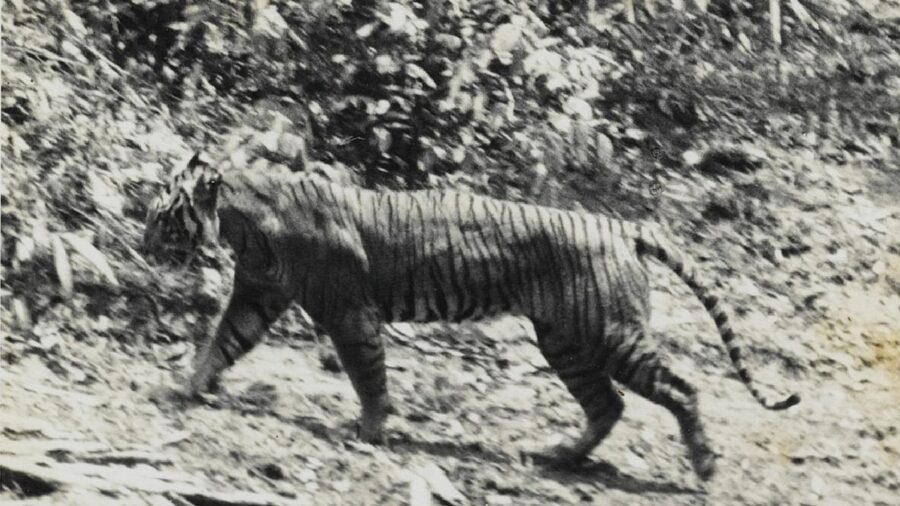Extinct Tiger Rediscovered After Incredible Clue Found By Scientists?

A single hair found by scientists suggests that an extinct tiger, thought to have gone extinct in the early 1980s may still be alive. The elusive Javan tiger may still roam the dense forests of Indonesia’s Java island, even though the last recorded sighting was in 1976. This finding of the single strand of hair has reignited hopes among conservationists, suggesting that rather than going extinct, this tiger has been in hiding for nearly 50 years.
Javan Tiger

Decades of relentless hunting and habitat destruction led to the declaration of extinction for the Javan tiger in 2008. However, a glimmer of hope emerged in 2019 when a local resident and conservationist, Ripi Yanur Fajar, reported a sighting of what he believed to be a tiger in West Java. Joined by researcher Kalih Raksasewu and government employee Bambang Adryanto, they ventured to the site and discovered footprints and claw marks consistent with a tiger’s presence.
Along with the footprints and claw marks, they also found a crucial piece of evidence: a single strand of hair clinging to a fence, marking the first tangible sign of the Javan tiger’s potential survival. The hair sample underwent genetic analysis at Indonesia’s Biology Research Centre for National Research and Innovation (BRIN) to find out if it truly belonged to the extinct tiger.
Genetic Analysis

Genetic analysis can be highly reliable in determining the species and subspecies of an animal, even from a single hair strand, as it compares specific genetic markers to known reference samples. However, the accuracy may vary depending on the quality of the sample and the techniques used in the analysis. Luckily, it seemed this strand of hair from the supposedly extinct tiger was intact enough to confirm what Fajar had hoped.
The results revealed a remarkable resemblance to the genetics of Sumatran tigers, the same subspecies as the Javan tiger, with a 97 percent similarity. Furthermore, a comparison with a museum specimen of a Javan tiger from 1930 suggested a genetic affinity, with a mere 0.3 percent difference from the extinct tiger. This comprehensive analysis led the researchers, including Raksasewu and Adryanto, to confirm that the hair sample belonged to the Javan tiger subspecies.
Future Of The Tiger

While this discovery offers a glimmer of hope that we might once again see this supposedly extinct tiger, the future of Javan tigers remains precarious. Centuries of habitat destruction and human encroachment have decimated their natural environment, leaving less than 2 percent of the original lowland forests intact. With Java being the most densely populated major island globally, the relentless expansion of agriculture continues to threaten the remaining habitat.
Searching For Visual Confirmation

Reports of tiger sightings and footprints over the years have hinted at the Javan tiger’s survival, yet confirmed sightings have been rare. The discovery of the hair sample validates these encounters, yet even if this extinct tiger exists, its survival hangs in the balance. Conservation efforts are urgently needed to protect the remaining habitat and prevent further decline in biodiversity.
While the Javan tiger’s fate remains uncertain, the discovery of the hair sample from the extinct tiger serves as a rallying cry for intensified conservation efforts. Without swift action, even if it currently exists, the iconic tiger of Java may fade into history, leaving behind a legacy of extinction.
Source: Oryx












